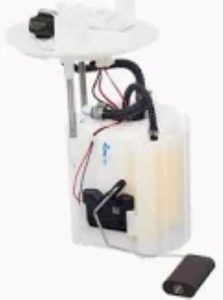The fuel pump on most modern cars is an electric turbine-type located inside the tank. Finally, this is not an arbitrary design decision but a choice based on some blend of performance, safety and engineering concerns. Fuel Pump: The fuel pump provides the correct pressure to deliver fuel from your tank all the way up to your engine. Putting the pump inside the tank may make packaging neater for enough said—greed, and a savings in volume too.
One of the most beneficial and crucial factors is thermal management. Gasoline in the tank acts as a natural coolant to the fuel pump. The fuel pump works perfectly in car engineering norms, owned by automotive so that there is efficient cooling it make.[of ]Anyway certainly helps[ and the milestones do not[sic]JSGlobalScope According to numbers generated by industry research, fuel pumps that live in the tank can soldier on for at least 100,000 – maybe as many as 150K miles—that is a great life span between repairs and replacement.
Moreover, it helps in shielding against outside elements as well. Unless you want your external fuel pump to heat up, cool down, or get pelted with road debris and rain (or they are built modularly)…the same for weather conditions and high temps etc. The pump is therefore protected from these elements in the tank, preventing damage. This type of setup is most commonly seen in vehicles made by big names like Toyota, Honda and Ford. Some classic platforms — such as the 2024 Toyota Camry and its in-tank fuel pump — suggest automakers are pursuing industry standards to boost vehicle dependability.
Also, in-tank fuel pumps operate more quietly than external types. Brian Sturgeon, an automotive professional at AutoTech Insights says that older vehicles primarily used external pumps and because they have no protection from the elements they are typically louder. In-tank pumps, on the other hand, use additional fuel to help muffle operational noise.

The pump's efficiency in keeping fuel pressure plays another major role. Fuel pressure is often more consistent in cars with an in-tank fuel pump than it would be otherwise, and that can help the engine deliver smoother operation. In-tank pumps have many of the same benefits; as technology has progressed, so too have in-tank fuel pump accuracy improved allowing for greater controls over exactly how much gas is metered into the engine — presumably a key factor to improving overall efficiency.
This configuration, however is not used in all the vehicles. Older models, especially those made before the 90s may have an external or engine mounted fuel pump. Even so, the last few decades have generally seen an industry-wide shift towards in-tank fuel pumps as this configuration better reflects modern engineering practices. A typical example is the presence of an inwheel fuel pump that BMW specifies for its nextgen 3 Series, just as they do with most high-end automotive designs focused on both performance and longevity.
Their proven reliability is backed up by their progressive use as a hugely popular alternative to in-tank fuel pumps. As automotive expert John Davis explained, "The in-tank fuel pump design is a marvel of modern vehicle technology that seamlessly blends safety with performance. Such a layout indicates major changes in car engineering that have been brought about by higher efficiency and longer-lasting parts.
Further information on positioning and advantages of fuel pumps can be found at Fuel Pump.